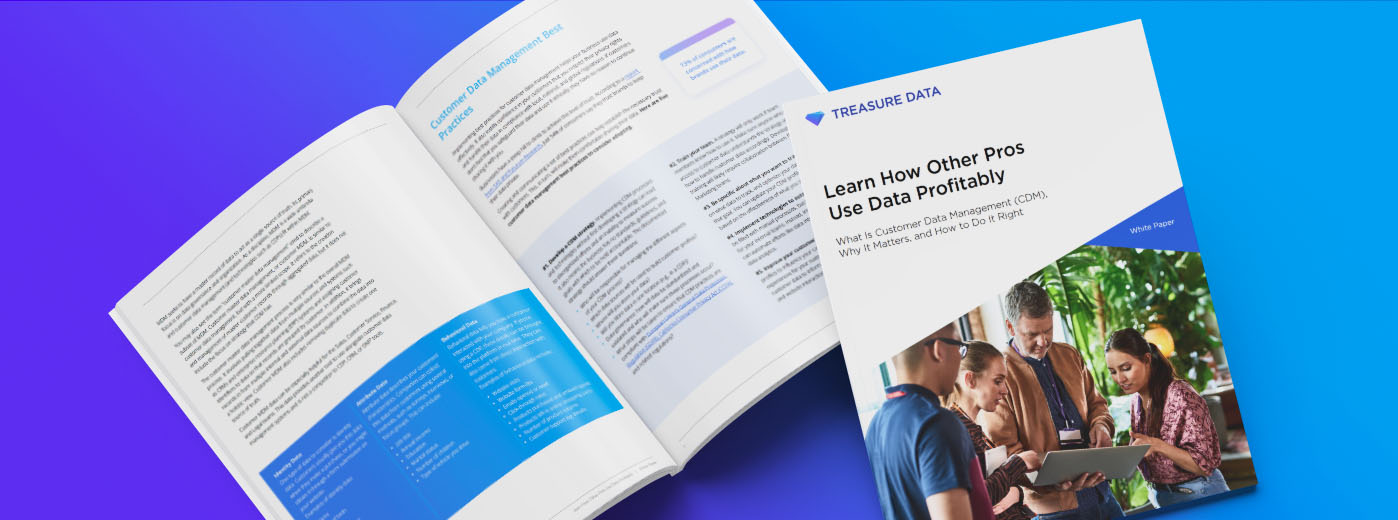Top 4 Customer Data Management Fundamentals That You Are Probably Overlooking
Last updated June 2, 2022
Customer data management (CDM) has come a long way from its humble beginnings as paper-based records, before their replacement by the first software solutions. Rapid advances in technology over the last two decades have changed how we record and store this information, but at the core, customer data management fundamentals remain the same. Let’s take a closer look at what really matters in CDM strategy today.
Customer Data Management Fundamentals
The concept of customer data management has expanded well beyond ledgers and “little black books” to fulfill a more complex potential today with the help of powerful computing applications and intelligent technology. Businesses and decision makers, however, still value customer data’s potential to transform enterprise-wide initiatives, made possible by the basic principles of quality information, data security, organization, and useful insights.
Customer Data Consolidation
In simple terms, customer data management consists of collected customer information that could prove useful to an organization. But if the daily batch of incoming data is scattered, incoherent, and ultimately unmanageable, it can do more harm than good. Consolidating data from all sources and repositories is necessary for creating an efficient and effective CDM strategy.This is only possible if decision-makers recognize the complexity of the customer journey with its omnichannel landscape and rapid rate of data generation. Unless companies are ready to capture, catalog, and activate customer data, CDM strategy will remain focused on resolving identities through guesswork and predicting behavior with little or no insights. On the other hand, when customer data is consolidated in a central hub where each new datapoint enriches unified customer profiles and audience segments, the possibilities for marketing and sales applications—across multiple industries—seem endless.
Data Security
With increased connectivity comes intensified corporate scrutiny about using customer-generated data responsibly and protecting it against harmful intent. Research estimates the average cost to a U.S.-based business following a data breach at $8.64 million in 2020. Therefore, a CDM strategy must be built on consumer trust earned by proven vigilance, security, and transparency.
- Vigilance. Companies must actively seek out threats to their customer databases and protect their assets. When a growing organization is looking for ways to collect more data, equal attention should be given to robust defenses against attempted cybercrimes.
- Security. Customer data should be secure not only from external theft, but also from internal risks such as data loss or corruption. Companies and trusted third parties need to protect data against human mistakes and hardware issues by establishing a contingency plan that includes backups and failsafe measures.
- Transparency. Companies must commit to upholding consumer privacy and communicate that pledge to their customers. This applies to both existing and prospective customers targeted by businesses.
Ensuring data security may feel like extra work, but in addition to helping businesses avoid hefty fines, such preventive measures enable companies to enjoy the benefits of a CDM strategy built on authentic customer trust.
Redundancy Reduction
Duplicate data wastes resources and duplicates marketing efforts. If you have five different records of the same person in disconnected hubs, that person will likely receive five phone calls/emails/letters all from the same company. It not only makes the organization appear less than organized, but redundant data also hinders a single customer view and takes up unnecessary storage.Therefore, redundancy reduction has become a critical customer data management fundamental in the age of continually-connected customers. It also presents one of the trickier challenges, as it requires a system-wide solution. Cleansing data—eliminating old, inaccurate, and duplicate records—leaves only high-quality information that can be resolved into unified customer views.Companies with a clean and organized data platform are better able to track marketing efficiency, sales performance, and customer engagement. They have access to more accurate insights and can activate personalized marketing initiatives quickly. Most importantly, they have room to collect more data to bolster their CDM strategy.
Universal Usability
Data can be intimidating to non-tech office personnel or front-facing teams. That’s why usability across internal teams is another of the essential customer data management fundamentals. The platform supporting a CDM strategy needs to be user-friendly and encourage company-wide adoption. Here are some features to look for:Seamless integration. A CDM strategy is best built on a platform that easily integrates with your existing technology stack. It should also be able to ingest all types of data from all types of sources the business already uses. Intuitive navigation. The best CDM platforms are easy to navigate and intuitive, even for non-tech users. Tools for data analysis, building audiences, and extracting insights should also be accessible to entry-level employees with minimal training. Data visualization. The CDM solution needs to be able to visualize data quickly for marketing, sales, and service purposes. Ideally, data dashboards should depict customer journeys, campaign progress, sales funnels, and audience segmentations using the latest information. This enables teams to move quickly in response to changing trends and consumer behavior.
Unlock Data Potential With Treasure Data CDP
With these customer data management fundamentals in mind, Treasure Data’s customer data platform enables digital transformation across industries. Global players in the automotive, retail, consumer packaged goods (CPG), financial, entertainment and life-sciences industries use Treasure Data enterprise CDP to:
- Build trust with customer consent and comply with data security regulations
- Simplify data management with a powerful, centralized platform
- Align marketing, sales, and service teams on the same page with single-customer views (SCV)
- Process billions of touchpoints and interactions to extract pivotal business insights
- Understand audiences at both the segment and individual levels
- Precisely target customers with the right message at the right time and place
Download Treasure Data’s white paper, “Learn How Other Pros Use Data Profitably,” here.To learn how to implement customer data management fundamentals in your data strategy, consult an expert today. Want to learn more? Request a demo, call 1.866.899.5386, or contact us for more information.
